If you're having issues with your computer that are hard to troubleshoot or track down, you may want to consider resetting or refreshing your system. If it's slow and you've already tried to clean it out, or if it's crashing and reinstalling all your drivers hasn't fixed it. Maybe you keep having issues downloading Windows updates. Even if you try many different solutions, sometimes you're not able to 100% fix a problem. Whatever the issue is, if it's software related, resetting or refreshing will probably help.
Resetting your computer will reinstall your operating system and take the computer back to factory settings. All user data and information will be removed and all programs will be removed unless they were pre-loaded by the manufacturer. If you want to start over with a clean slate, a reset is what you want.
- If you have forgotten your password or pin for the computer, Windows 10 provides a way to access the recovery environment from the login screen which will give you the option to reset your computer. Check out our guide for that here: How to Reset/Refresh Windows 10 from the Login Screen
Resetting the system is also good option if you're planning to sell or give away the computer and want to make sure it's wiped clean beforehand.
Refreshing your computer will reinstall your operating system and remove programs but preserve your user data, account and settings on the system. Like with resetting, apps that were pre-loaded by the manufacturer will stay, but all programs you installed will be removed.
Disclaimer: If you have data you need to keep, we always recommend backing up your system. Even if you just want to refresh, no matter how slim the chances there is always potential for something to go wrong and leave your system in state where it's inaccessible.
With that being said, let's get to how to reset/refresh your system:
- Click the Start Button (typically found at the lower left corner of the screen) and navigate to Settings
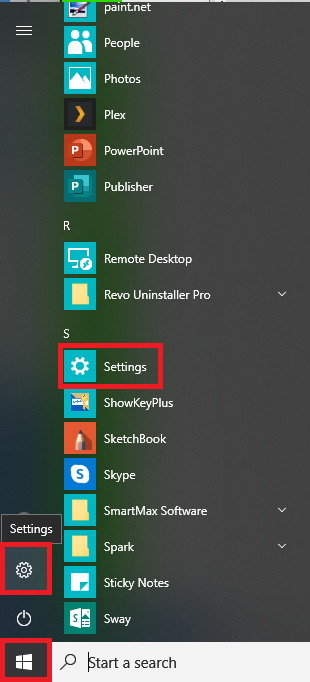
- Click Update and Security on the Windows Settings pop-up window.
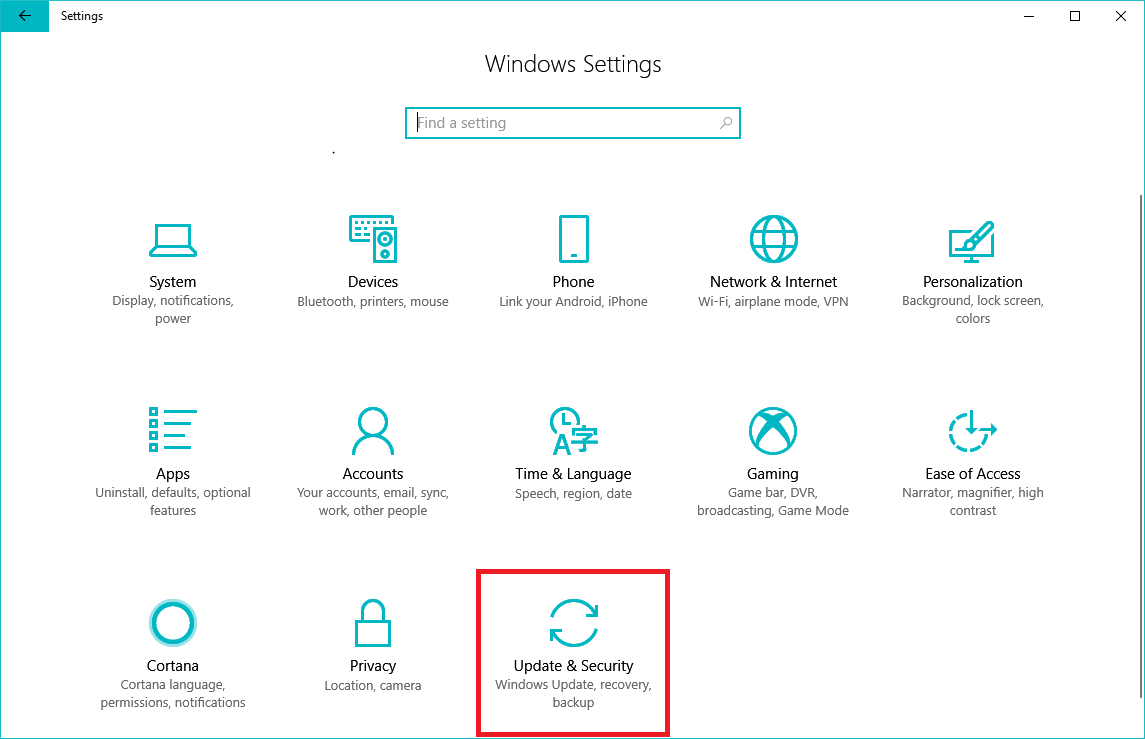
- Click Recovery on the left, then click Get Started under Reset this PC

Refresh
- If you just want to refresh the computer and keep your personal data, choose Keep my files.
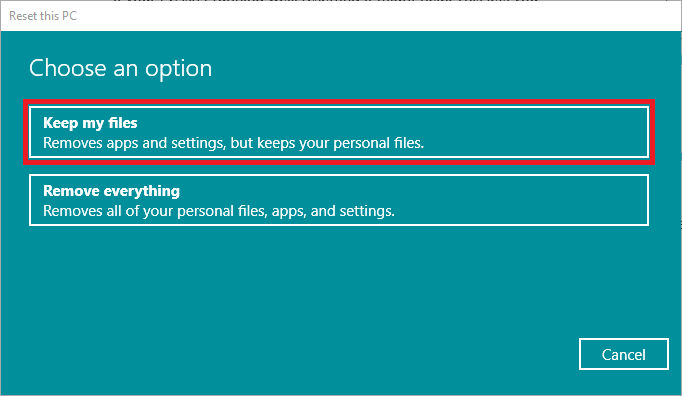
- You'll be given a list of applications that will be removed as part of the refresh process. Take note of those and click Next

- Click Reset when you're ready to start
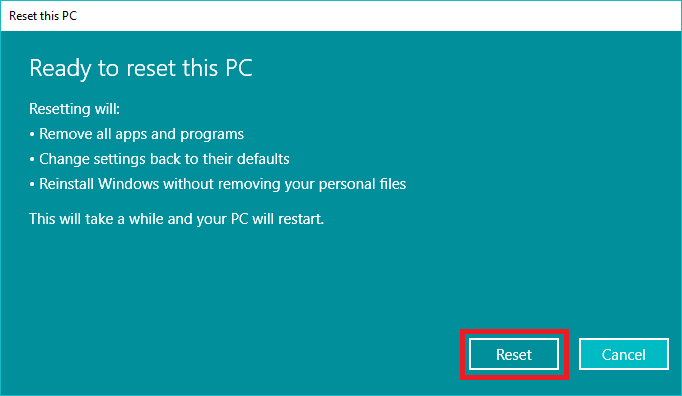
Reset
- If you want to reset your computer and start with a clean slate, select Remove everything

- You'll be asked if you want to Just remove my files or Remove my files and clean the drive. If you intend to keep your system choose just remove my files, if you're getting rid of it you can clean the drive to prevent any possibility of data recovery, just note that cleaning the drive takes much longer than just removing your files.
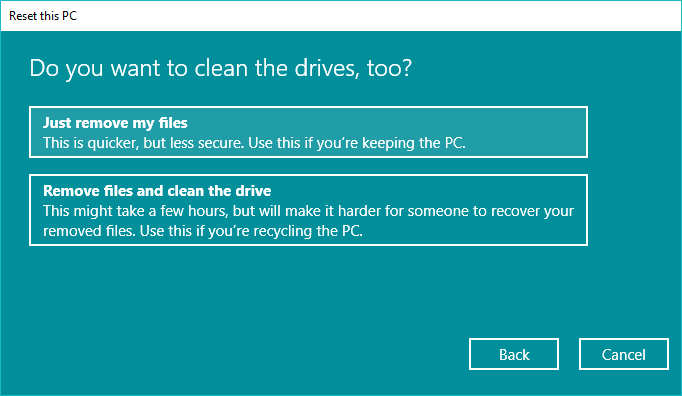
- After choosing the option you prefer, click Reset when you're ready to start.

- The progress for the reset/refresh will be displayed on screen. If you're refreshing, once it finishes the computer should restart and take you to the sign-in screen. If you're resetting, it will take you to first-time Windows setup.